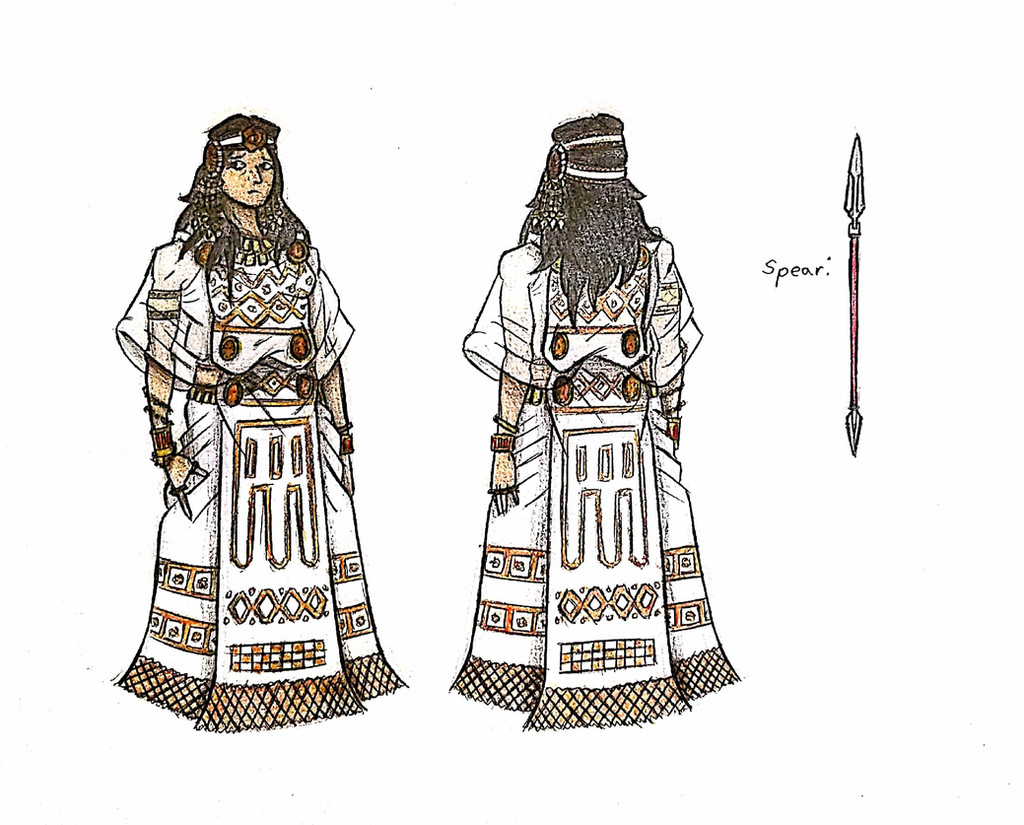HOME | DD
 Avapithecus — Phaedymia
Avapithecus — Phaedymia

#character #design #history #iran #persian #princess #referencesheet #achaemenid #phaedymia
Published: 2023-05-04 12:49:37 +0000 UTC; Views: 3150; Favourites: 37; Downloads: 0
Redirect to original
Description
Phaedymia was an Iranian princess, firstly married to King Cambyses II, and later to his brother Bardiya. She was the daughter of Otanes, himself said to be the son of Pharnaspes, and thus the brother of Cyrus the Great's wife Cassandane. If you've noticed that Cambyses and Bardiya are both sons of Cyrus, and therefore Phaedymia's blood cousins, you're not alone. While this type of incest was hardly uncommon in ancient times, it was still heavily frowned upon in Achaemenid society. Indeed, it was one of many slanderous accusations thrust on the sons of Cyrus after their reigns. However, while our first instinct is to blame Darius, the man who usurped their throne and is a known master of changing history to suit his needs, it seems this one at least is actually the fault of Herodotus. Darius's records Otanes instead as the son of Thukhra, not Pharnaspes, and this confusion only seems to occur in Herodotus's retelling. Though let's be honest, Darius would've had no problem spreading this little tidbit of misinformation about his predecessor anyways. Credit where credit is due.The way Herodotus tells it, it is Phaedymia who investigates the strange aloof behavior of her second husband, Bardiya. Sneaking into his bedroom, she discovers that he has no ears, because it turns out Cambyses had killed the real Bardiya and replaced him with a body double. She reported this to her father, who in turn gathered six conspirators together, including Darius, to assassinate the imposter. When it came time to decide the new constitution for the Achaemenid Empire, Otanes spoke up in favor of the people, advocating for a democracy. When the others told him that's dumb and lame, he presumably gave a defeated sigh and just asked that he and his descendants be given a good peaceful life under the reign of Darius. The promise was kept, and indeed Darius would go on to marry Phaedymia's daughter with Bardiya, Parmys. Phaedymia seems to drop out of the historical record afterwards.
Design notes, there's no contemporary art of Phaedymia… or really any women at all from the Achaemenid era. At first I thought this was just me not using the right search terms and such, but no apparently this is a recognized phenomenon in Iranian studies. Women existed, obviously, unless the Achaemenids were secretly a cabal of alien overlords that bred through mitosis but uh… I don't think that's it. Indeed, there were very rich, powerful, and respected women in ancient Iran, especially in the royal family, and while we have their names, we often don't have their faces. One paper I read analyzes the striking lack of women in Achaemenid art, and notes that there doesn't seem to be any sort of legal prohibition against it, but for some reason which let's be honest is probably just another patriarchy issue, the cultural trend just didn't see fit to include women in their inscriptions. I realize that's a little vague and unsatisfactory, but it's the best conclusion we can assess from the available evidence. You know, unless it's the aliens thing, in which case who needs any of that stupid evidence stuff?
Instead I took reference not from ancient sources but, of all things, a poster for a 1908 French short film called "La Morte de Cambyse". I wasn't able to find anywhere to watch the film so I can't speak for it's quality, but the online summaries describe it as a dramatic take on the death of Cambyses. Supposedly, the plot follows a woman named Amestris, a fictional character made the wife of Prexaspes. Following the incident where Cambyses kills Prexaspes's son, Amestris pretends to reciprocate Cambyses's love in order to get close enough to kill him. As far as I can tell, there is no historical source to back up this film and its creative decisions, but hey maybe the internet is lying to me. Again, couldn't find the film itself. Since this is clearly ahistorical anyway and I can't imagine myself ever needing to use the character of Amestris for anything, I went ahead and swiped the outfit she wears in the poster to use for Phaedymia. It's pretty, and Phaedymia is the closest historical counterpart to this Amestris anyways, even if the connection is a bit of a stretch. For a D&D token, it serves its purpose well enough.
























